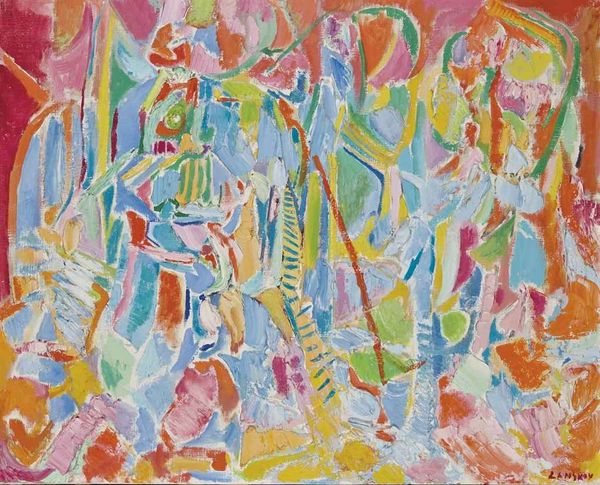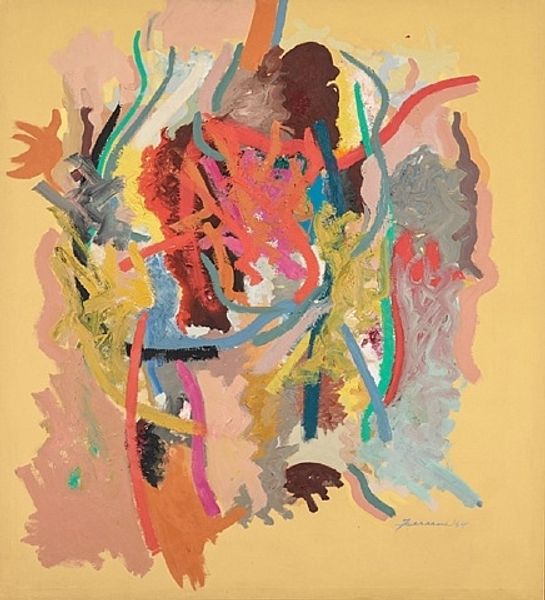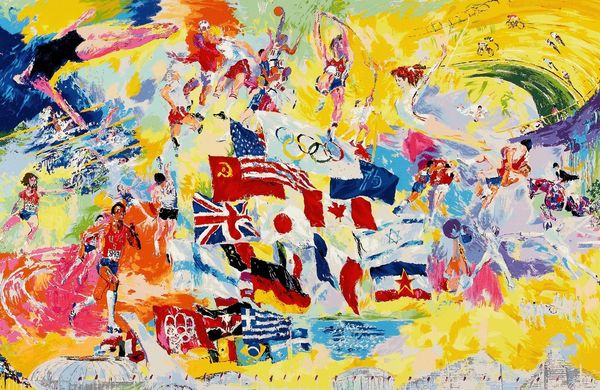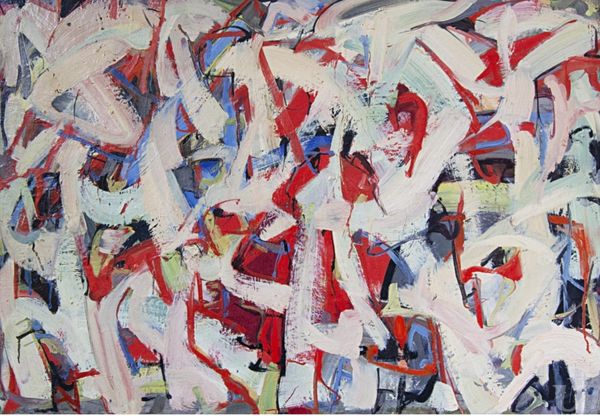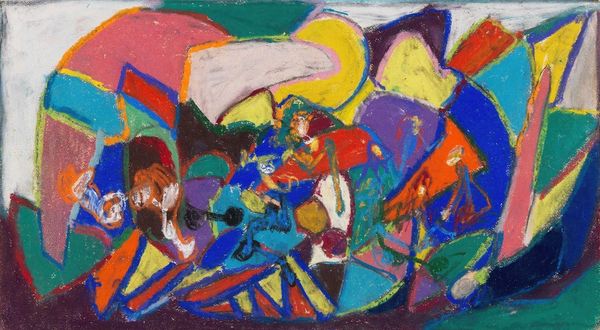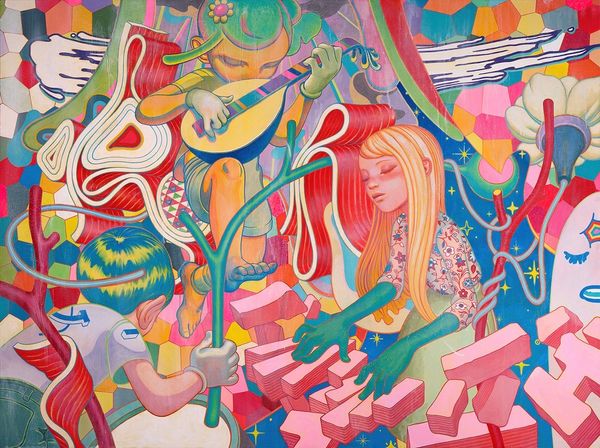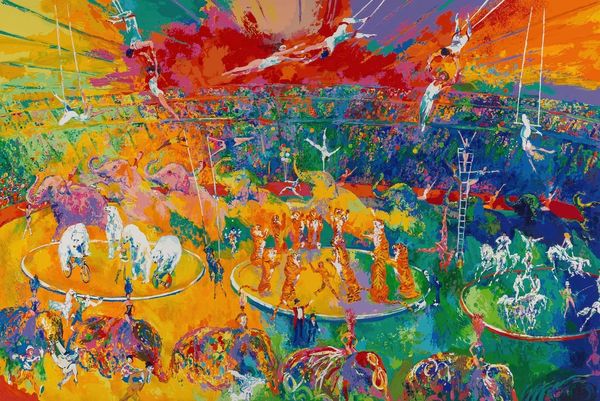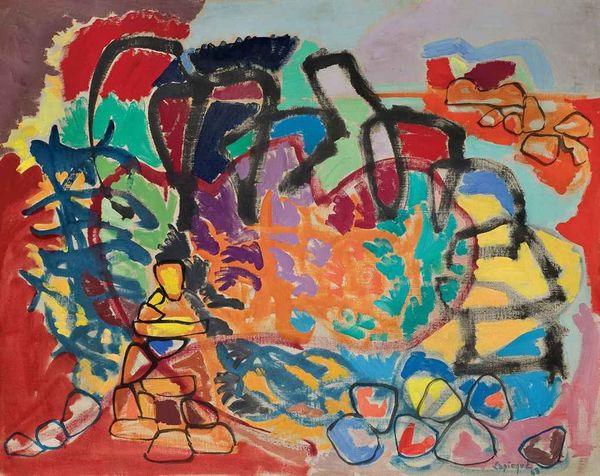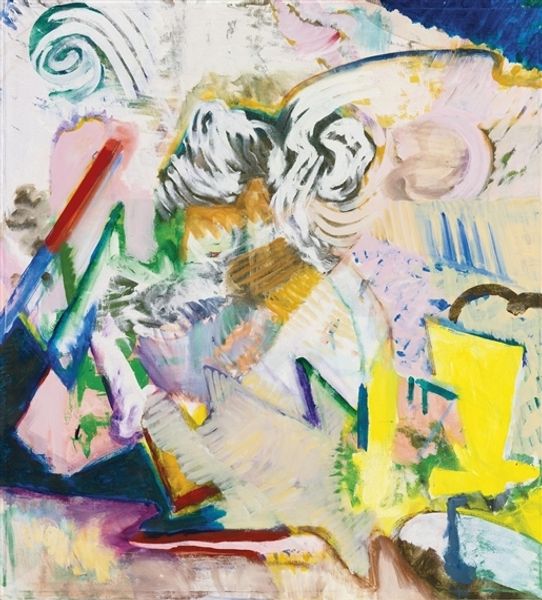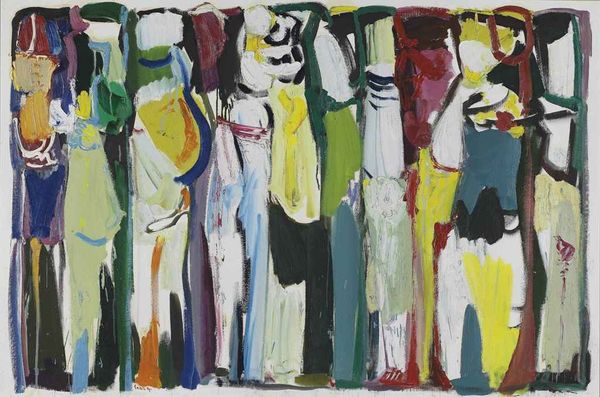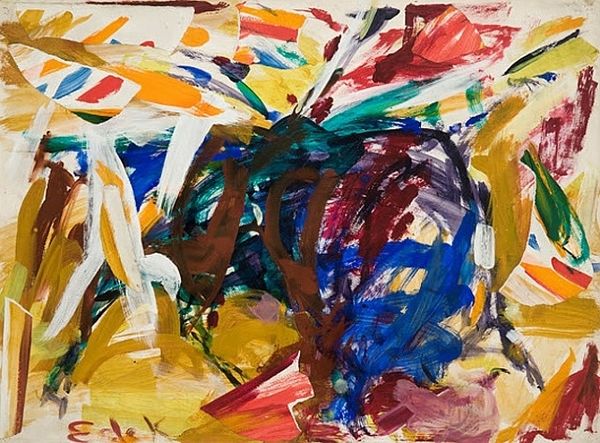
Copyright: Charles Lapicque,Fair Use
Curator: So, here we have Charles Lapicque's "Avant le départ," painted in 1950. What strikes you first? Editor: Honestly? Pure, unadulterated joyous chaos. It feels like a horse race seen through the eyes of someone who’s had one too many glasses of champagne. I can almost hear the thundering hooves and the roar of the crowd, but it’s all a beautiful, slightly tipsy blur. Curator: That’s a perfect way to put it. Lapicque employs a very specific type of fauvist figuration with bold outlines, and a nearly dissonant color palette. You can see how he applied the oil-paint in these really flat shapes, almost like pieces of a stained glass. Editor: I love that stained glass analogy! It's like the light is fractured and reassembled, which adds to that feeling of heightened excitement and… well, controlled mania. Is there really supposed to be a horse race there? I can kinda of imagine all other scenes. Curator: The social context certainly influenced this choice. Post-war, the races represented an ideal setting, a kind of spectacle of leisure. But it also gives him ample opportunities to deconstruct those traditional artistic perspectives on figures within the landscape and instead offer something geometric and much more fractured. Editor: And speaking of fractures, notice how the colors refuse to stay within the lines. It is almost childish! Is that intentional? Or the consequence of working really, really quickly? Curator: Well, that’s the real beauty of Fauvism, isn't it? This deliberate push away from naturalistic representation towards emotional expression. Lapicque was evidently engaging with ideas around abstraction even while staying within figuration. Editor: It's less a depiction of a horse race and more a distillation of the *feeling* of a horse race. A wild, jubilant mess! I find it quite moving, this strange mix of adrenaline and, perhaps, existential bewilderment. Curator: Ultimately, in "Avant le départ," we're confronted with Lapicque's investigation into painting itself – what constitutes a figure, a landscape, a scene, when representation is pushed to such extremes? Editor: And yet, despite all that theoretical heavy lifting, the painting manages to feel so... playful! Thanks for pointing out details I certainly overlooked! Curator: Always a pleasure! Thanks for lending me your refreshing sensibility to the painting!
Comments
No comments
Be the first to comment and join the conversation on the ultimate creative platform.
